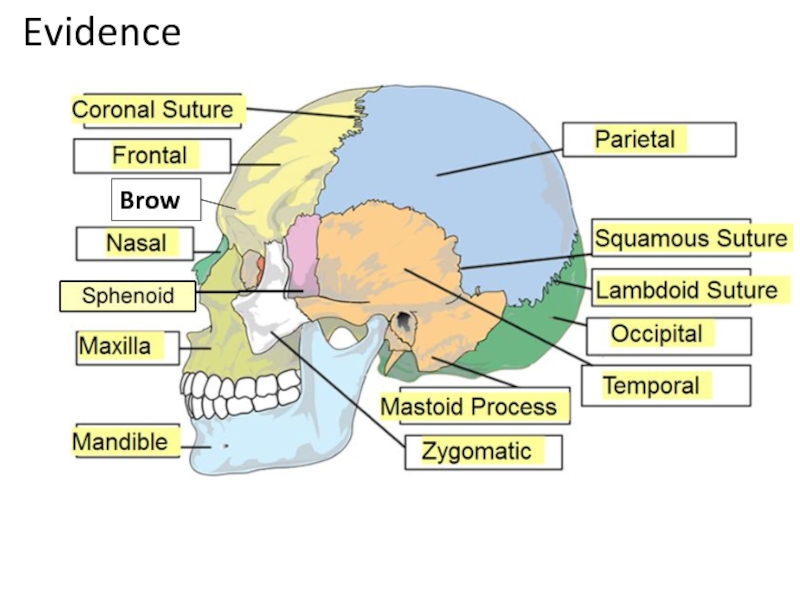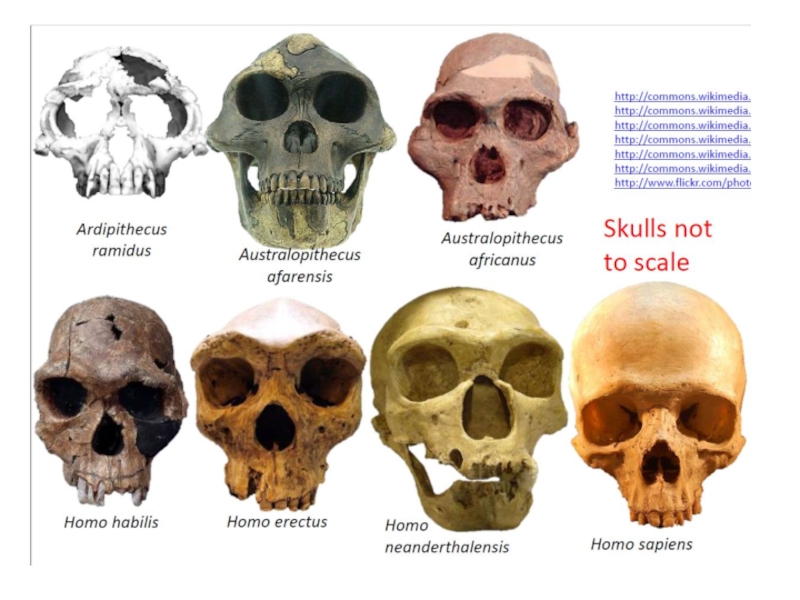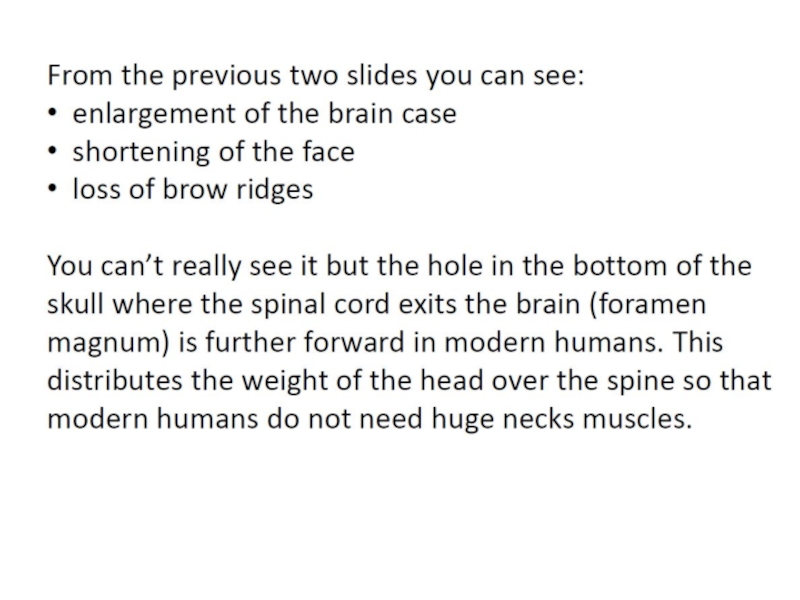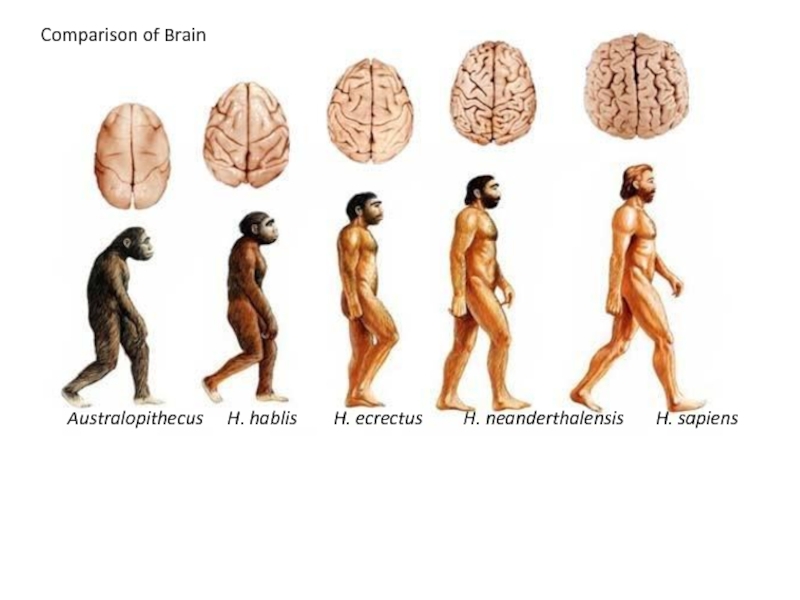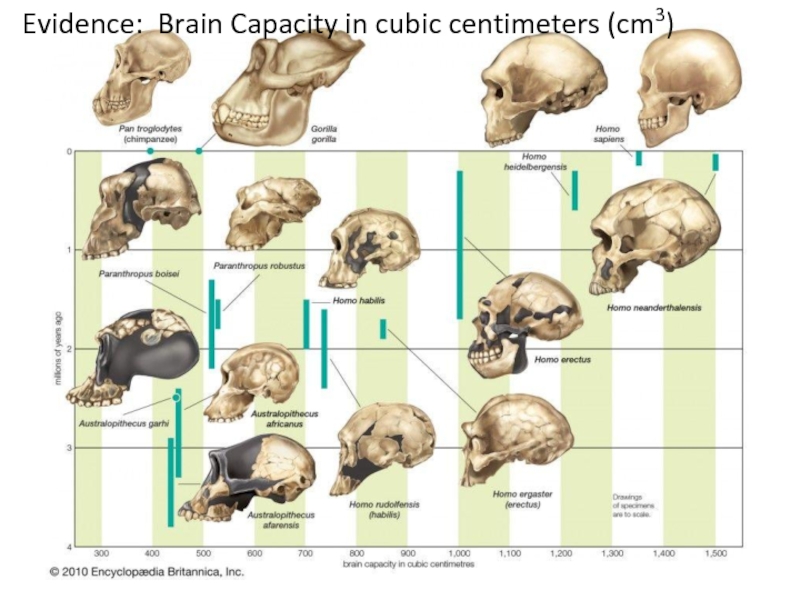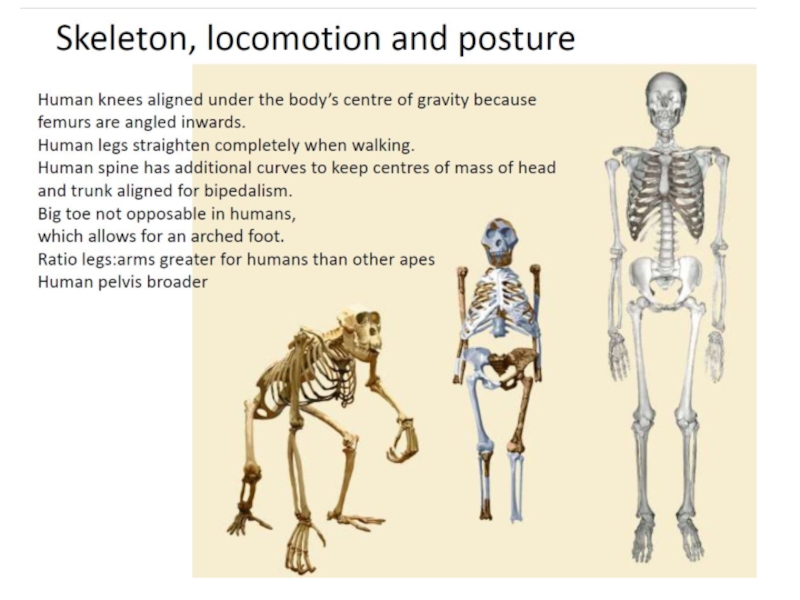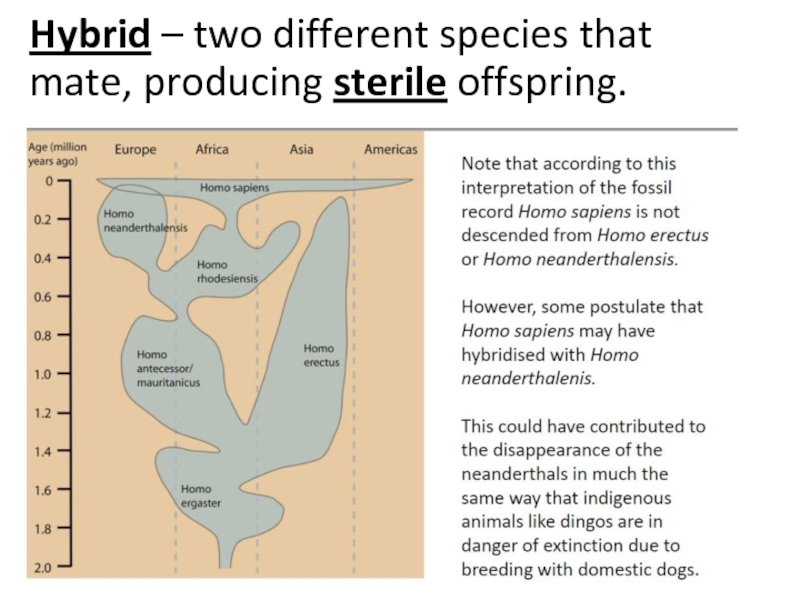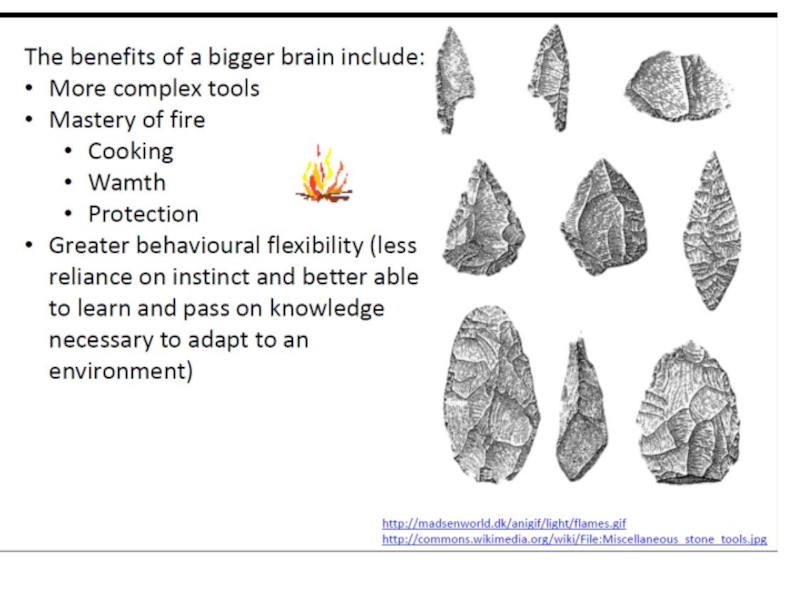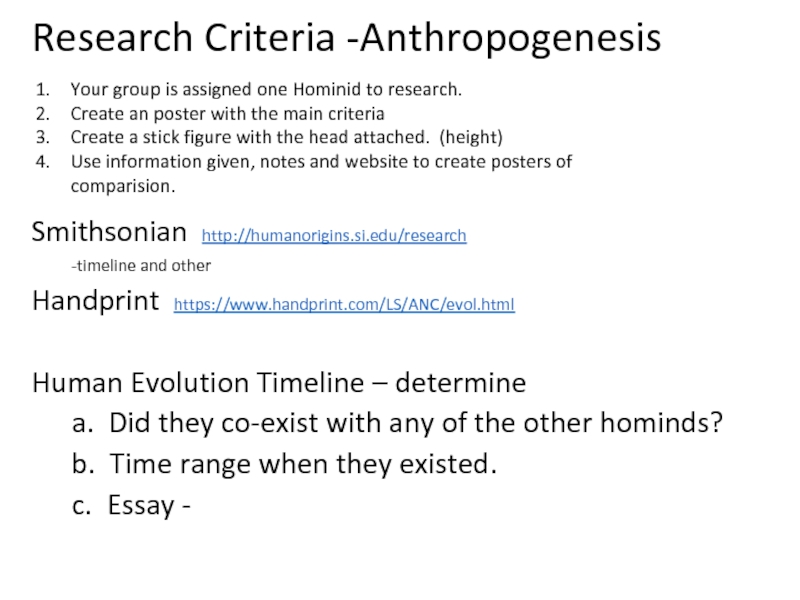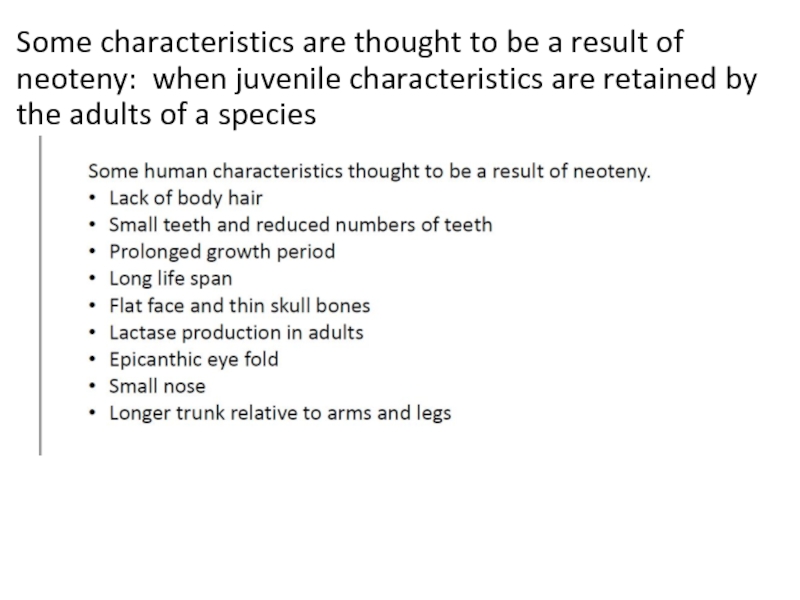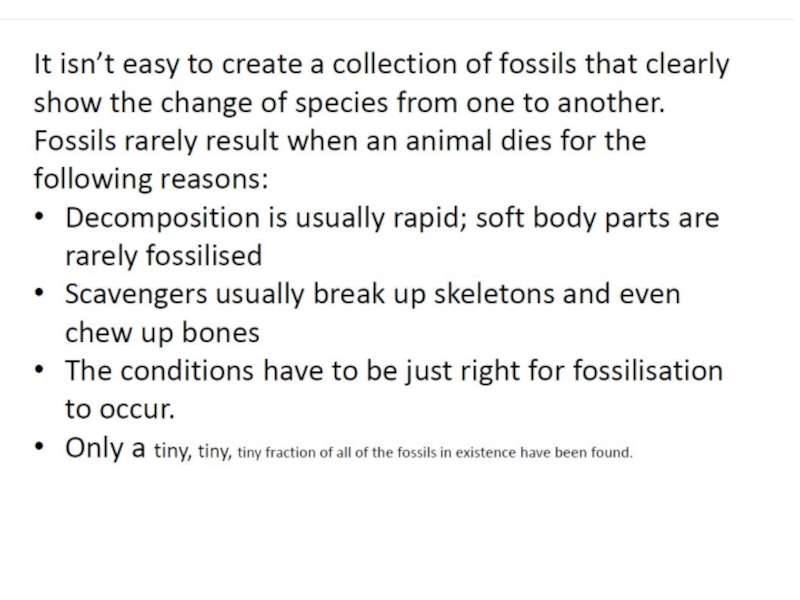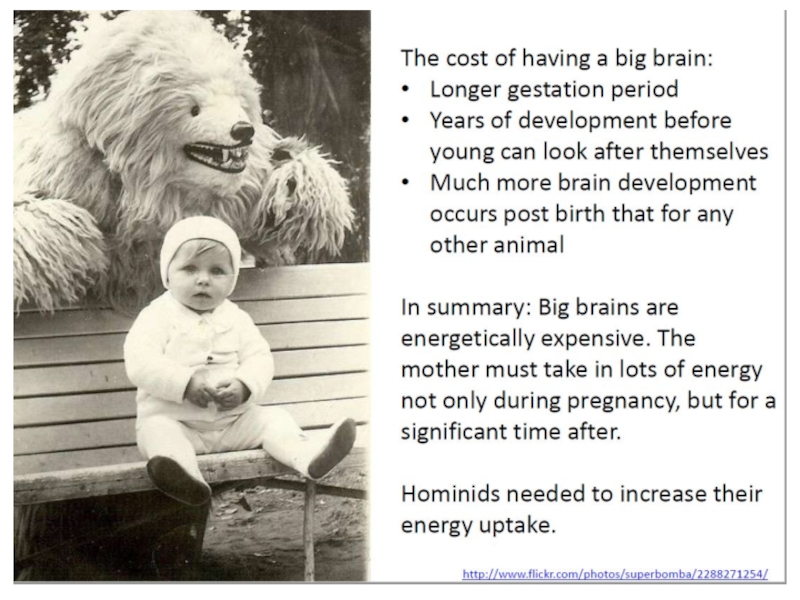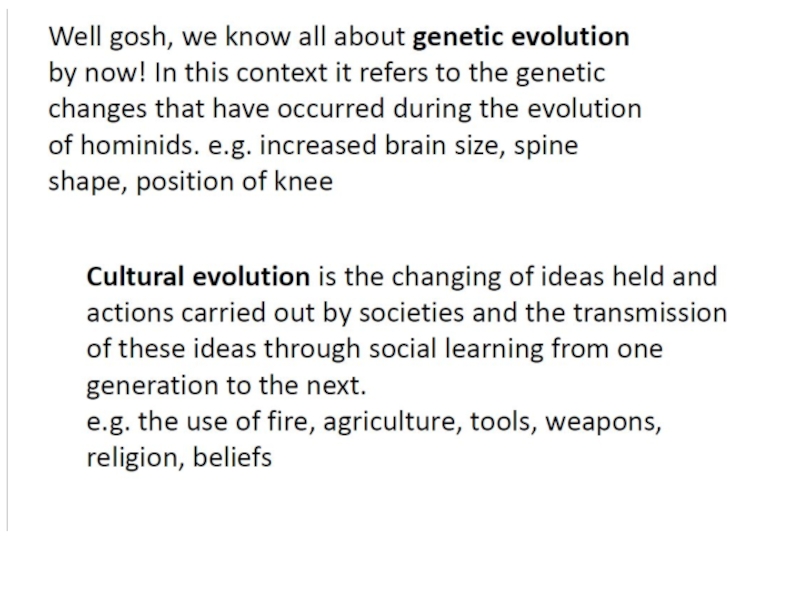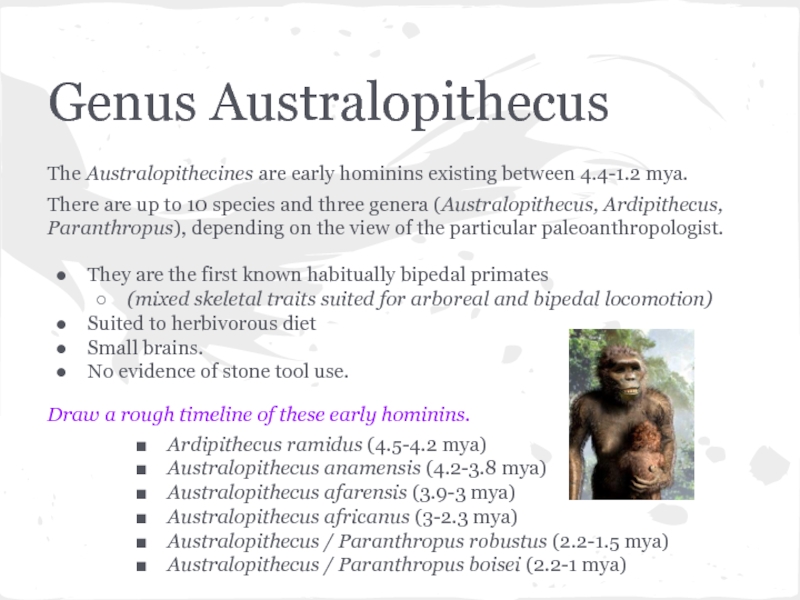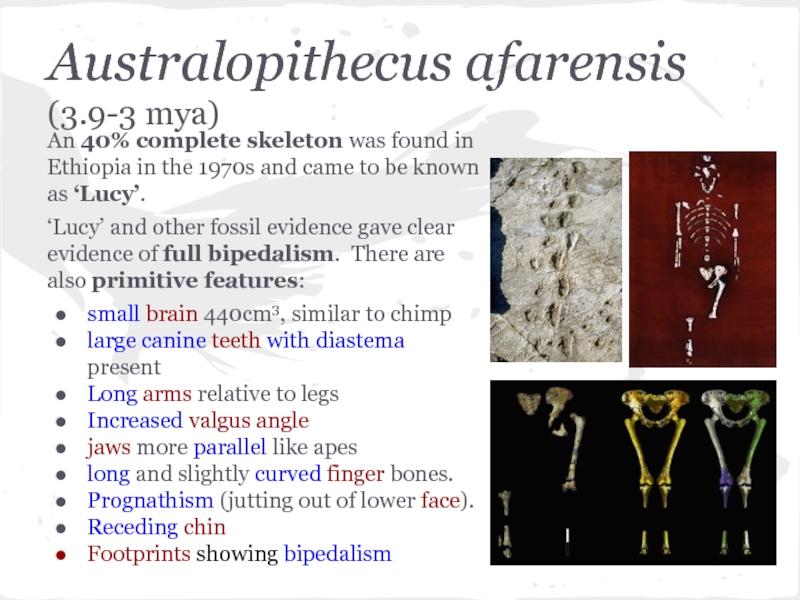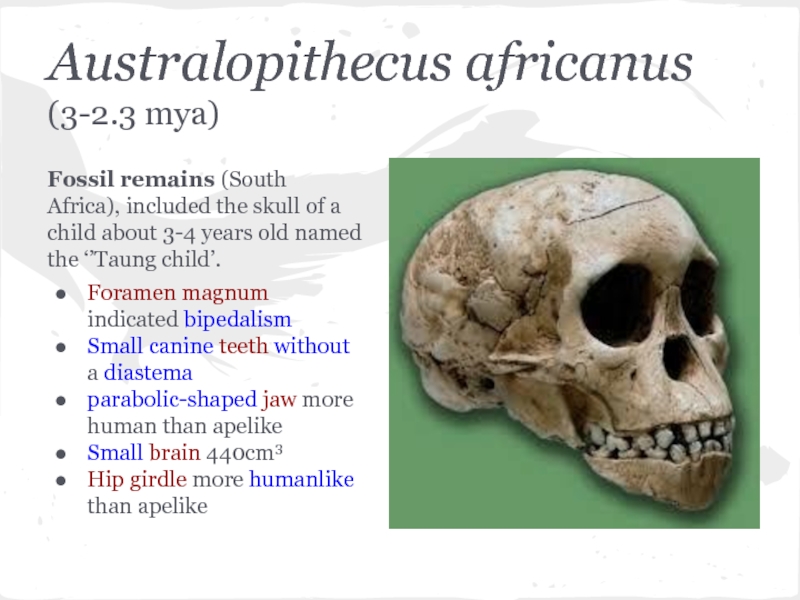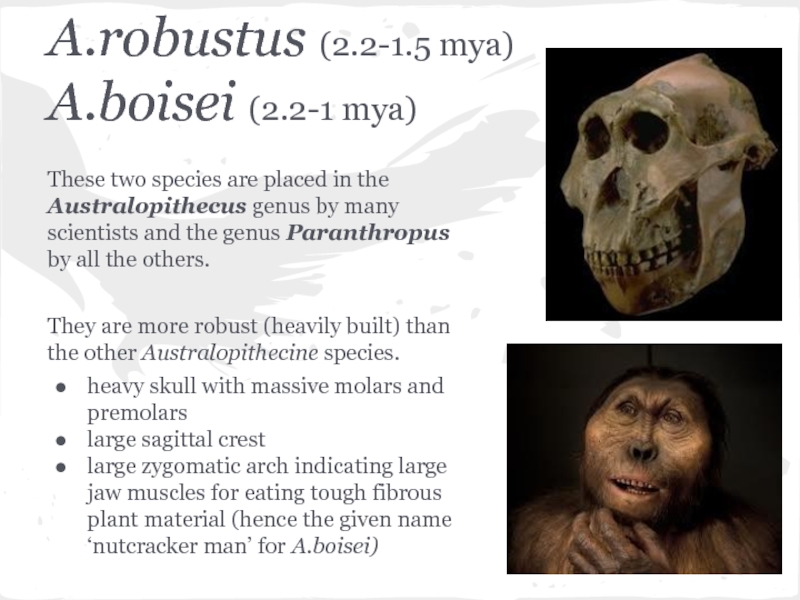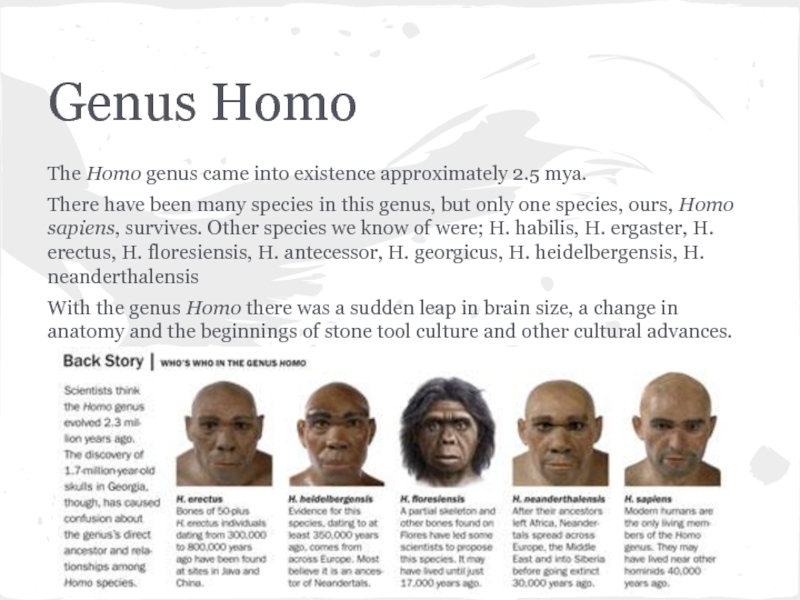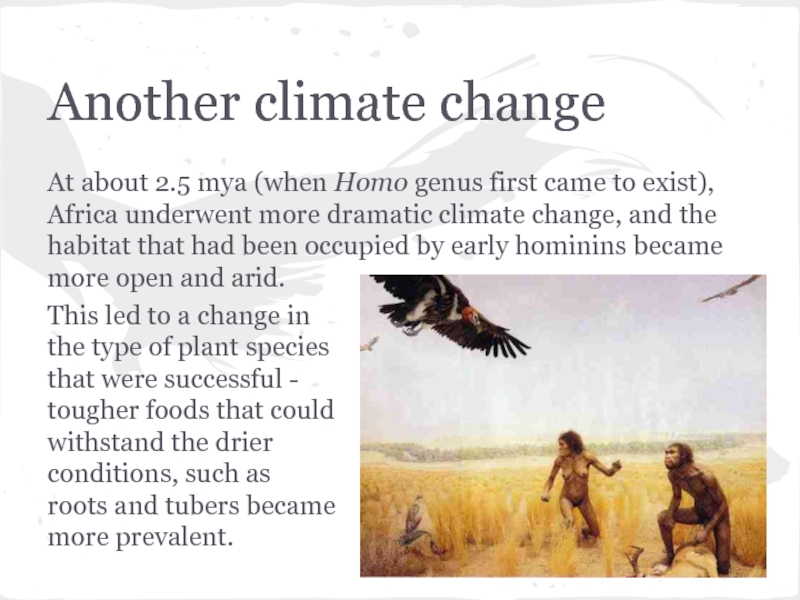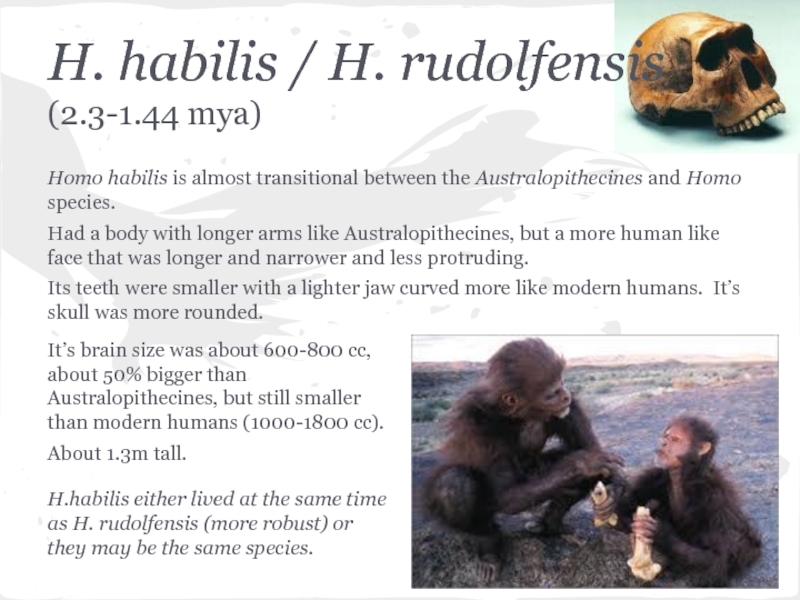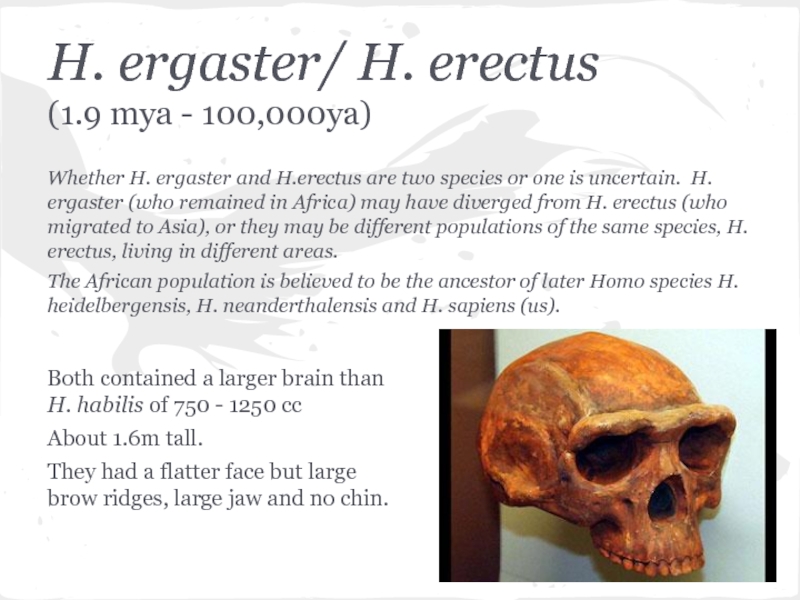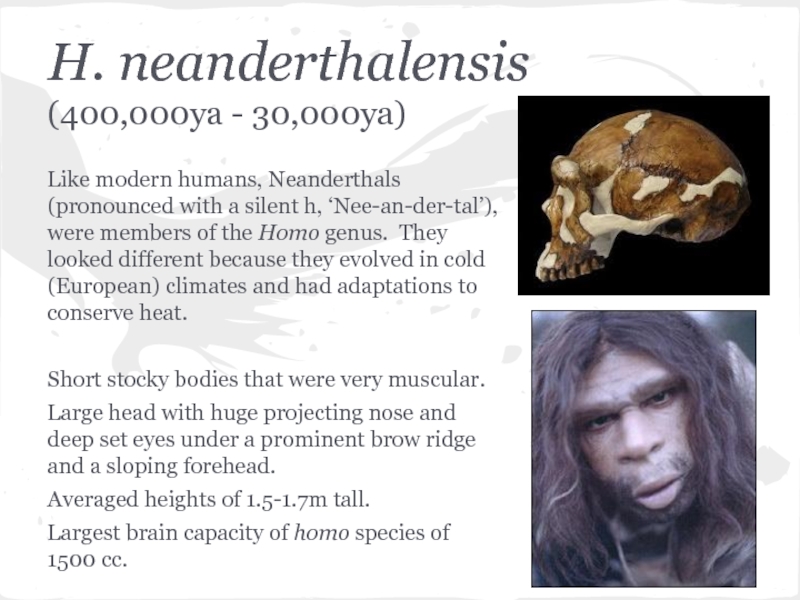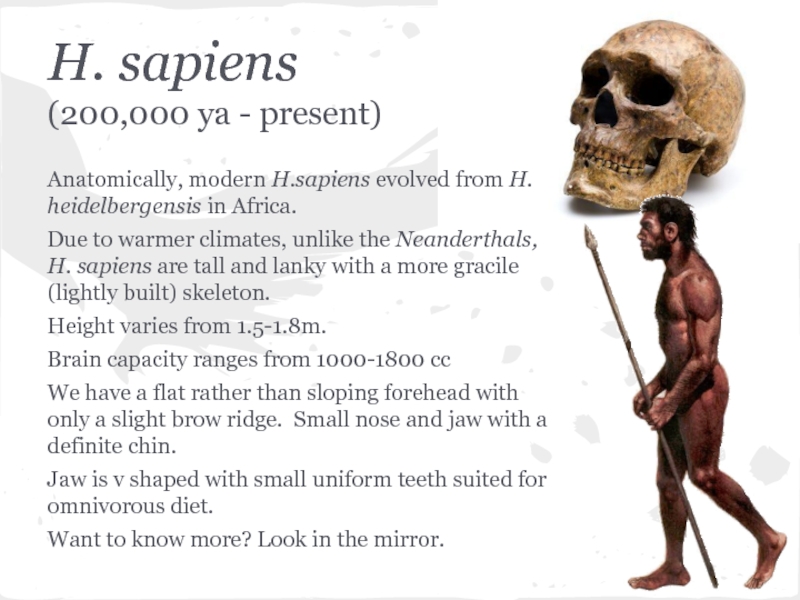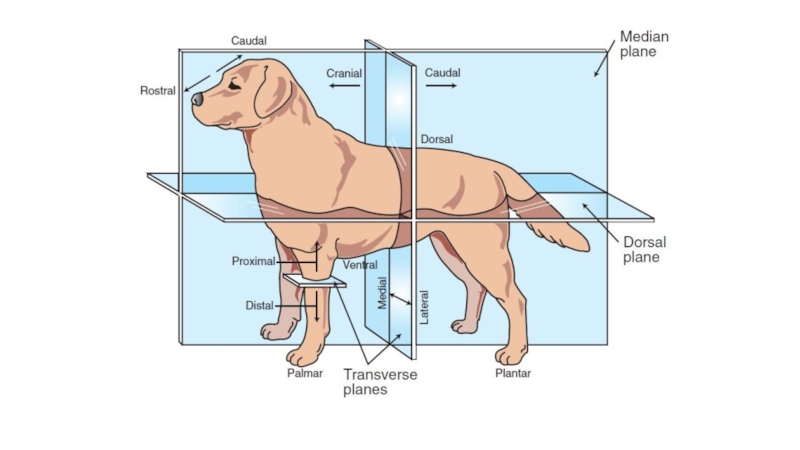- Главная
- Разное
- Дизайн
- Бизнес и предпринимательство
- Аналитика
- Образование
- Развлечения
- Красота и здоровье
- Финансы
- Государство
- Путешествия
- Спорт
- Недвижимость
- Армия
- Графика
- Культурология
- Еда и кулинария
- Лингвистика
- Английский язык
- Астрономия
- Алгебра
- Биология
- География
- Детские презентации
- Информатика
- История
- Литература
- Маркетинг
- Математика
- Медицина
- Менеджмент
- Музыка
- МХК
- Немецкий язык
- ОБЖ
- Обществознание
- Окружающий мир
- Педагогика
- Русский язык
- Технология
- Физика
- Философия
- Химия
- Шаблоны, картинки для презентаций
- Экология
- Экономика
- Юриспруденция
Evidence for Evolution презентация
Содержание
- 1. Evidence for Evolution
- 4. Australopithecus H. hablis H.
- 5. Evidence: Brain Capacity in cubic centimeters (cm3)
- 6. Evidence: Comparison of phalanges – finger bones
- 9. Hybrid – two different species that mate, producing sterile offspring.
- 11. Research Criteria -Anthropogenesis Smithsonian http://humanorigins.si.edu/research -timeline
- 12. Some characteristics are thought to be a
- 17. Genus Australopithecus The Australopithecines are early hominins
- 18. Australopithecus afarensis (3.9-3 mya) An 40% complete
- 19. Australopithecus africanus (3-2.3 mya) Fossil remains (South
- 20. A.robustus (2.2-1.5 mya) A.boisei (2.2-1 mya) These
- 21. Which was our ancestor? It is generally
- 22. Genus Homo The Homo genus came into
- 23. Another climate change At about 2.5 mya
- 24. H. habilis / H. rudolfensis (2.3-1.44 mya)
- 25. H. ergaster/ H. erectus (1.9 mya -
- 26. H. neanderthalensis (400,000ya - 30,000ya) Like modern
- 27. H. sapiens (200,000 ya - present) Anatomically,
Слайд 11Research Criteria -Anthropogenesis
Smithsonian http://humanorigins.si.edu/research
-timeline and other
Handprint https://www.handprint.com/LS/ANC/evol.html
Human Evolution Timeline –
a. Did they co-exist with any of the other hominds?
b. Time range when they existed.
c. Essay -
Your group is assigned one Hominid to research.
Create an poster with the main criteria
Create a stick figure with the head attached. (height)
Use information given, notes and website to create posters of comparision.
Слайд 12Some characteristics are thought to be a result of neoteny: when
Слайд 17Genus Australopithecus
The Australopithecines are early hominins existing between 4.4-1.2 mya.
There are
They are the first known habitually bipedal primates
(mixed skeletal traits suited for arboreal and bipedal locomotion)
Suited to herbivorous diet
Small brains.
No evidence of stone tool use.
Draw a rough timeline of these early hominins.
Ardipithecus ramidus (4.5-4.2 mya)
Australopithecus anamensis (4.2-3.8 mya)
Australopithecus afarensis (3.9-3 mya)
Australopithecus africanus (3-2.3 mya)
Australopithecus / Paranthropus robustus (2.2-1.5 mya)
Australopithecus / Paranthropus boisei (2.2-1 mya)
Слайд 18Australopithecus afarensis
(3.9-3 mya)
An 40% complete skeleton was found in Ethiopia in
‘Lucy’ and other fossil evidence gave clear evidence of full bipedalism. There are also primitive features:
small brain 440cm3, similar to chimp
large canine teeth with diastema present
Long arms relative to legs
Increased valgus angle
jaws more parallel like apes
long and slightly curved finger bones.
Prognathism (jutting out of lower face).
Receding chin
Footprints showing bipedalism
Слайд 19Australopithecus africanus
(3-2.3 mya)
Fossil remains (South Africa), included the skull of a
Foramen magnum indicated bipedalism
Small canine teeth without a diastema
parabolic-shaped jaw more human than apelike
Small brain 440cm3
Hip girdle more humanlike than apelike
Слайд 20A.robustus (2.2-1.5 mya)
A.boisei (2.2-1 mya)
These two species are placed in the
They are more robust (heavily built) than the other Australopithecine species.
heavy skull with massive molars and premolars
large sagittal crest
large zygomatic arch indicating large jaw muscles for eating tough fibrous plant material (hence the given name ‘nutcracker man’ for A.boisei)
Слайд 21Which was our ancestor?
It is generally agreed that:
A.anamensis and A.afarensis were
A.ramidus was likely to have been close to the ancestor of both humans and apes
Australopithecus/Paranthropus robustus and boisei were specialised herbivorous forms that were evolutionary dead ends; i.e left no present-day descendants.
Слайд 22Genus Homo
The Homo genus came into existence approximately 2.5 mya.
There have
With the genus Homo there was a sudden leap in brain size, a change in anatomy and the beginnings of stone tool culture and other cultural advances.
Слайд 23Another climate change
At about 2.5 mya (when Homo genus first came
This led to a change in the type of plant species that were successful - tougher foods that could withstand the drier conditions, such as roots and tubers became more prevalent.
Слайд 24H. habilis / H. rudolfensis
(2.3-1.44 mya)
Homo habilis is almost transitional between
Had a body with longer arms like Australopithecines, but a more human like face that was longer and narrower and less protruding.
Its teeth were smaller with a lighter jaw curved more like modern humans. It’s skull was more rounded.
It’s brain size was about 600-800 cc, about 50% bigger than Australopithecines, but still smaller than modern humans (1000-1800 cc).
About 1.3m tall.
H.habilis either lived at the same time as H. rudolfensis (more robust) or they may be the same species.
Слайд 25H. ergaster/ H. erectus
(1.9 mya - 100,000ya)
Whether H. ergaster and H.erectus
The African population is believed to be the ancestor of later Homo species H. heidelbergensis, H. neanderthalensis and H. sapiens (us).
Both contained a larger brain than H. habilis of 750 - 1250 cc
About 1.6m tall.
They had a flatter face but large brow ridges, large jaw and no chin.
Слайд 26H. neanderthalensis
(400,000ya - 30,000ya)
Like modern humans, Neanderthals (pronounced with a silent
Short stocky bodies that were very muscular.
Large head with huge projecting nose and deep set eyes under a prominent brow ridge and a sloping forehead.
Averaged heights of 1.5-1.7m tall.
Largest brain capacity of homo species of 1500 cc.
Слайд 27H. sapiens
(200,000 ya - present)
Anatomically, modern H.sapiens evolved from H. heidelbergensis
Due to warmer climates, unlike the Neanderthals, H. sapiens are tall and lanky with a more gracile (lightly built) skeleton.
Height varies from 1.5-1.8m.
Brain capacity ranges from 1000-1800 cc
We have a flat rather than sloping forehead with only a slight brow ridge. Small nose and jaw with a definite chin.
Jaw is v shaped with small uniform teeth suited for omnivorous diet.
Want to know more? Look in the mirror.
